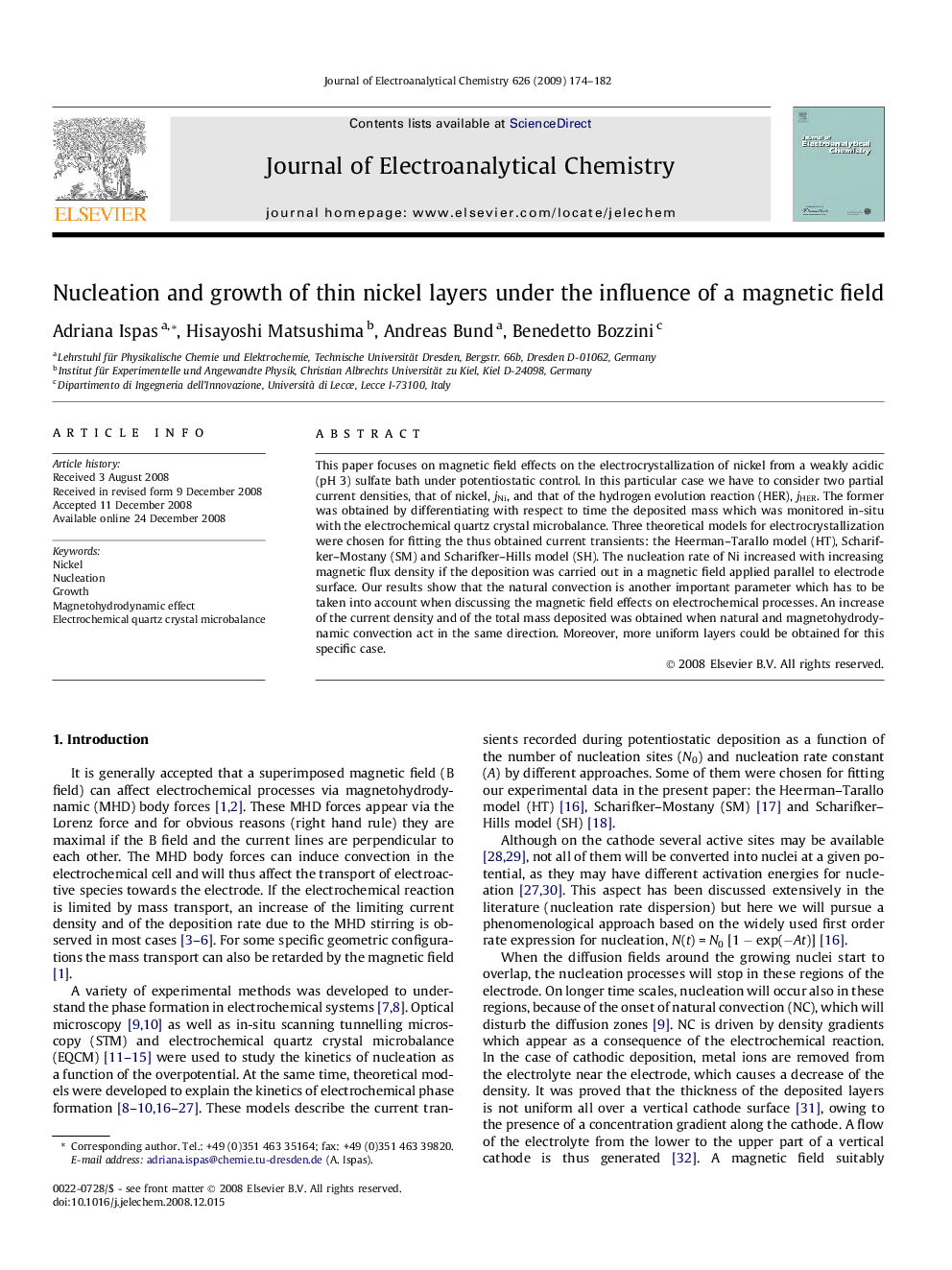| Article ID | Journal | Published Year | Pages | File Type |
|---|---|---|---|---|
| 220260 | Journal of Electroanalytical Chemistry | 2009 | 9 Pages |
This paper focuses on magnetic field effects on the electrocrystallization of nickel from a weakly acidic (pH 3) sulfate bath under potentiostatic control. In this particular case we have to consider two partial current densities, that of nickel, jNi, and that of the hydrogen evolution reaction (HER), jHER. The former was obtained by differentiating with respect to time the deposited mass which was monitored in-situ with the electrochemical quartz crystal microbalance. Three theoretical models for electrocrystallization were chosen for fitting the thus obtained current transients: the Heerman–Tarallo model (HT), Scharifker–Mostany (SM) and Scharifker–Hills model (SH). The nucleation rate of Ni increased with increasing magnetic flux density if the deposition was carried out in a magnetic field applied parallel to electrode surface. Our results show that the natural convection is another important parameter which has to be taken into account when discussing the magnetic field effects on electrochemical processes. An increase of the current density and of the total mass deposited was obtained when natural and magnetohydrodynamic convection act in the same direction. Moreover, more uniform layers could be obtained for this specific case.
